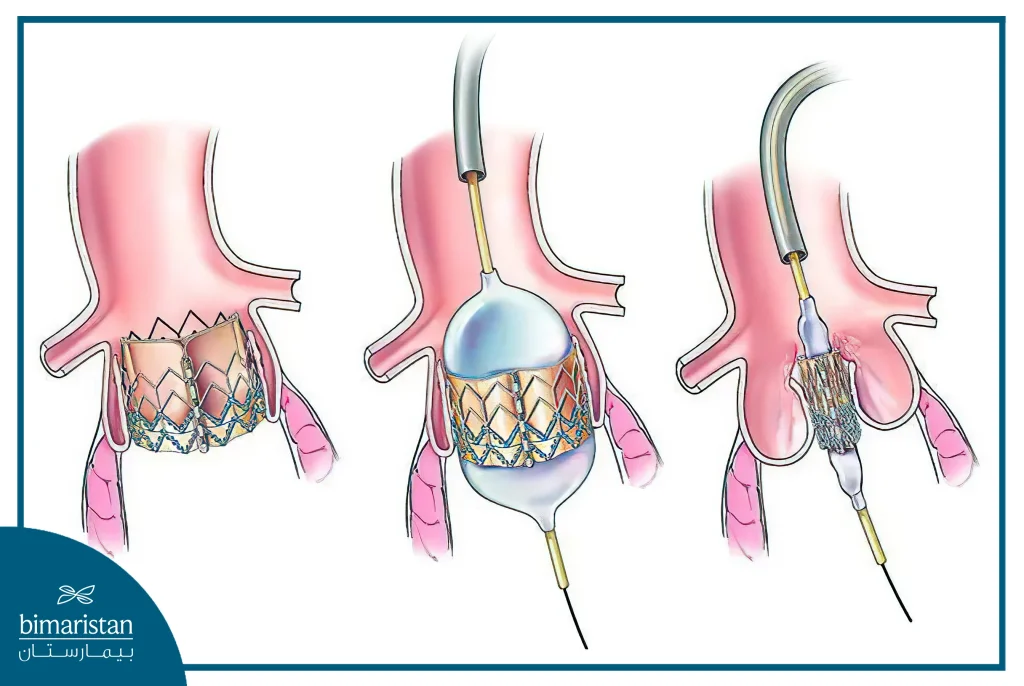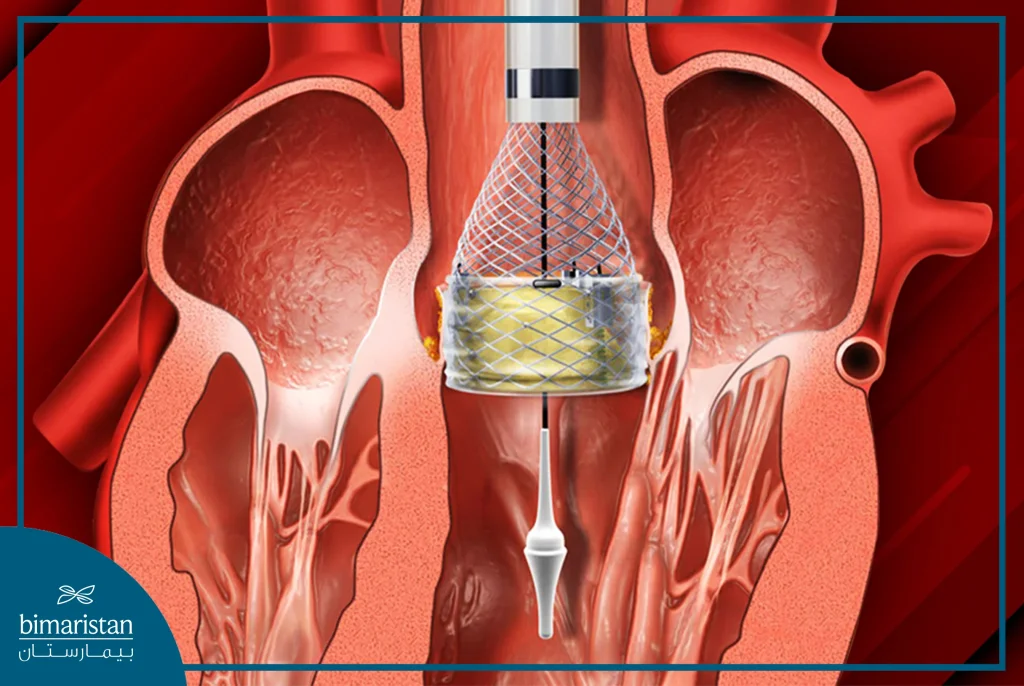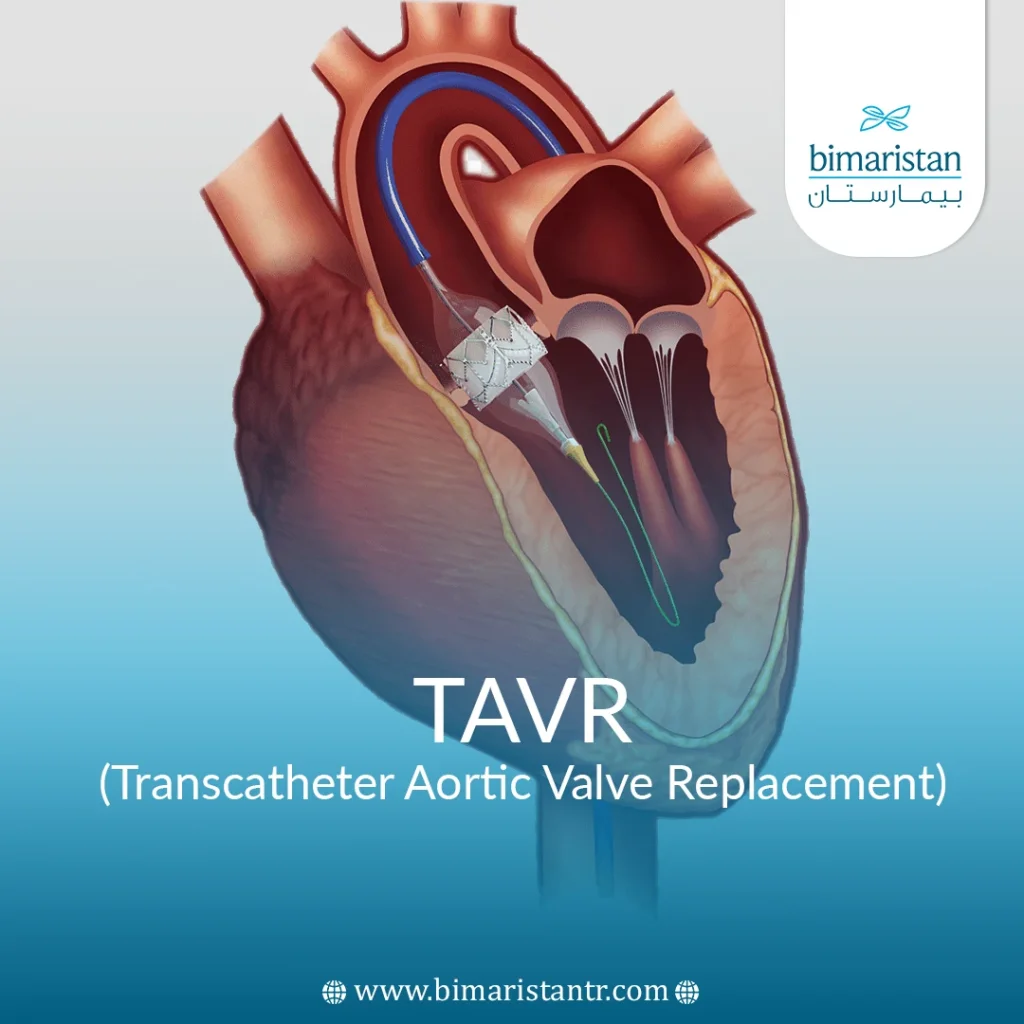Transcatheter Aortic Valve Replacement (TAVR) is a minimally invasive procedure that has become a preferred method for aortic valve replacement in Turkey due to its simplicity and reduced complications in the country’s top hospitals.
Let’s agree that transcatheter procedures are now prevalent in the medical field and are often preferred by both doctors and patients because they offer the same outcomes as open surgeries with fewer side effects.
As a result, aortic valve replacement via catheterization has recently become increasingly common. Turkey has been at the forefront of cardiac surgery advancements, and this article will explain why.
What is transcatheter aortic valve replacement (TAVR)?
TAVR is a surgical procedure for replacing the aortic valve when it is damaged or unable to function properly. It is commonly performed on patients with aortic stenosis.
This minimally invasive procedure involves placing a new heart valve over the diseased valve, avoiding the need for open-heart surgery.
The new valve functions similarly to stents that widen coronary arteries when blocked (due to myocardial infarction).
Once the new valve is in place, it pushes the old valve aside, taking over its role in regulating blood flow (a valve-in-valve procedure).

What does the TAVR procedure involve?
Traditionally, Heart valve replacement requires open-heart surgery with a sternotomy, where the chest is surgically opened. However, TAVR or TAVI can be performed through small incisions, leaving all the chest bones intact.
Although every procedure carries some risk, the risks associated with TAVR are very low, similar to placing a stent in the coronary arteries. TAVR offers a good option for patients who are not candidates for traditional surgery. The procedure can be done in two ways, and the doctor will choose the best method based on your condition:
Method 1:
The vascular surgeon inserts a cardiac catheter through the groin or neck arteries. This heart valve replacement through the groin does not require a surgical incision in the chest. Most patients are treated with sedatives and local anesthesia, known as non-sedating anesthetics. Interventional imaging helps reach the valve, and the artificial valve is placed where the old valve was.
Method 2:
The second method involves a very small surgical incision in the chest to access the aortic valve.
Is TAVR better than aortic valve surgery via endoscopy or robot-assisted surgery?
This transcatheter procedure has recently been approved by the U.S. Food and Drug Administration (FDA) as an alternative to surgery for patients with severe aortic stenosis who are high-risk surgical candidates.
There are significant differences between standard aortic valve surgery and TAVI.
TAVR may also be suitable if you have a previously implanted biological valve that is no longer functioning properly.
It’s important to note that the artificial aortic valve used in this procedure may be made from various animals’ heart tissue. If you have any concerns, inform your doctor so they can provide a valve made from cow tissue (which is more common) or other materials as deemed appropriate.

Who is a suitable candidate for TAVR?
TAVI patients are usually in their 70s or 80s, often with other health conditions, making them more suitable for minimally invasive methods with quicker recovery times.
Although TAVR is a relatively new procedure, it significantly improves the quality of life for patients with aortic valve disease who have no surgical alternative. It prevents further heart damage, enhances quality of life, and increases survival rates, which medication alone cannot achieve.
Short-term studies comparing TAVR with surgical aortic valve replacement have shown similar quality-of-life outcomes. Still, not enough research exists to recommend catheter-based treatment over surgery definitively.
However, current evidence from this and other studies suggests that transcatheter valve replacement is the gold standard for patients with symptomatic aortic stenosis who are at high surgical risk.
Contact us for more information about heart valve replacement procedures in Turkey and whether catheterization is better than open-heart surgery. The Bimaristan Center offers the best medical consultations and directs you to the top medical centers at the lowest possible cost.
Complications of TAVR and post-procedure care
Although TAVR has few complications, replacing a critical valve like the aortic valve in such a sensitive location can carry some risks, including:
- Vascular injury
- Stroke
- Severe heart failure
- Fluid accumulation around the heart
- Bleeding due to blood-thinning medications commonly used
- Kidney failure from medicines given during the procedure, which may cause an allergic reaction (infrequent)
- Irregular heart rhythms, possibly requiring a pacemaker
- Heart attack
- Infection
These complications are relatively rare, and Turkey’s health system has worked to minimize them by training top doctors and equipping hospitals to provide optimal care.
Most patients are discharged within a day or two after the procedure and can walk normally upon discharge.
After the procedure, your doctor will prescribe medications and provide instructions to avoid overexerting the heart or the new valve during recovery.
You can also read more about robotic valve replacement surgery in Turkey.
In conclusion, TAVR is the preferred option for many elderly patients, offering new hope to those who are not candidates for open-heart surgery. The Bimaristan Center is committed to providing this advanced care to patients of all ages and conditions.
Cost of aortic valve replacement
TAVR procedure cost varies significantly depending on several factors, including:
Type of Procedure:
- Open-heart surgery: Costs range between $10,000 and $150,000.
- TAVR (Transcatheter Aortic Valve Replacement): Costs range between $30,000 and $200,000.
Type of Valve:
- Mechanical valves: Last longer but may require lifelong anticoagulant therapy. Not applicable with TAVR
- Biological valves: Require replacement after 10-15 years but do not require anticoagulants.
Location of the Hospital:
- United States: Among the most expensive countries for aortic valve replacement.
- Europe: Less expensive than the U.S. but still costly.
- Turkey: Offer more affordable options for aortic valve replacement.
Health Insurance:
Health insurance can help cover the cost, but additional out-of-pocket expenses may exist.
Other Factors:
- Surgeon’s experience: Highly experienced surgeons may charge more.
- Patient’s condition: Some cases may require more complex care.
Examples of open-heart aortic valve replacement costs in different countries:
- United States: $50,000 – $150,000
- Germany: $30,000 – $80,000
- India: $10,000 – $25,000
- Turkey: $15,000 – $40,000
References:
- TAVR: Transcatheter Aortic Valve Replacement, FRANKEL CARDIOVASCULAR CENTER.
- Transcatheter Aortic Valve Replacement (TAVR), JOHNS HOPKINS.
- Transcatheter Aortic Valve Replacement (TAVR), MARCUS HEART VALVE CENTER.

